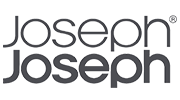Blog
Operating Cycle Formula + Calculator

The inventory conversion period is the length of time from operating cycle the purchase of inventory to the time the sales are made on credit. Managing your operating cycle efficiently often requires the right tools and software to streamline processes, monitor key performance indicators, and make informed decisions. We will explore essential tools and software that can help you effectively manage and optimize your operating cycle.

Accounts receivable period
- Depending on the industry, this kind of an inventory turn might be unacceptable.
- After completion, an invoice is raised, and the client may take another 30–60 days to pay.
- Learn investment analysis, competitive evaluation, company analysis, and more.
- With a double-entry bookkeeping system, total debits should equal total credits.
- Conversely, a high DSI may indicate that you have excessive inventory on hand or that products are not selling as expected.
- The business can improve its operating cycle by increasing the efficiency of the value-adding process.
A shorter cash conversion cycle leads to healthier cash flow, allowing the company to meet financial obligations promptly without incurring penalties. This is because a shorter cycle means the company can collect payments quickly, correctly forecast inventory needs, or pay its bills slowly. The fundamental concepts above will enable you to construct an income statement, balance sheet, and cash flow statement, which are the most important steps in the accounting cycle. Companies with shorter operating cycles typically experience reduced working capital needs and improved cash flow management. They can also react more swiftly to changes in customer demands, market conditions, and technological advancements, enhancing their competitiveness and overall business agility. The third stage includes the cash the company owes its current suppliers for the inventory and goods it purchases, and the period in which it must pay off those obligations.
Want to Reduce Your DSO? Unlock 13 Proven Strategies to:
- Join us as we explore the essence of the operating cycle, unravel the various stages involved, and delve into its implications for financial performance and decision-making.
- Modern accounting software and ERP systems automate some processes in the accounting cycle.
- You might have noticed that businesses talk about their operating cycle differently, depending on their industry or size, adding to the confusion.
- In this article, we will cover in detail about cash operating cycle in accounting.
Barbara is a financial writer for Tipalti and other successful B2B businesses, including SaaS and financial companies. She is a former CFO for fast-growing tech companies with Deloitte audit experience. When she’s not writing, Barbara likes to research public companies and play Pickleball, Texas Hold ‘em poker, bridge, and Mah Jongg.
Cash Cycle Vs. Operating Cycle
If depreciation is excluded from expenses in the operating cycle, the net operating cycle represents ‘cash conversion cycle’. The operating cycle reveals the time that elapses between outlay of cash and inflow of cash. Quicker the operating cycle less amount of investment in working capital is needed AI in Accounting and it improves the profitability. The duration of the operating cycle depends on the nature of industry and the efficiency in working capital management.
- The meaning of the operating cycle is the time taken to convert inventory into cash through sales and collections.
- The operating cycle serves as a valuable tool for businesses to assess their financial health, identify operational inefficiencies, and make informed decisions for long-term success.
- Days Sales Outstanding (DSO) measures the average number of days it takes for your company to collect payments from customers after making a sale.
- Two GAAP requirements — recognition and matching — provide guidance in this area, and are the topic of the next sections.
- The accounting cycle is vital because it helps companies track their actual results against their budget while following the golden rules of accounting.
- It encompasses the entire manufacturing or production process, including sourcing materials, converting them into finished products, and keeping them in stock until they are sold.
Balance Sheet
As a result, the company can improve cash flow, reduce processing time, and maintain strong relationships with suppliers. The accounting cycle vs operating cycle are entirely different financial terms. The accounting cycle consists of the steps from recording business transactions to generating financial statements for an accounting period. The operating cycle is a measure of time between purchasing inventory, selling the inventory as a product, and collecting cash from the sales transaction.

Mitigate credit risk, reduce bad debt, and streamline customer onboarding with AI-powered insights. Shaun Conrad is a Certified Public Accountant and CPA exam expert with a passion for teaching. After almost a decade of experience in public accounting, he created MyAccountingCourse.com to help people learn accounting & finance, pass the CPA exam, and start their career. Once the real underlying issue has been identified, management can better address and fix the problem. Access and download collection of free Templates to help power your productivity and performance.

Assets are everything a company owns, and liabilities are everything a company owes. The balance sheet is one of the essential financial statements established throughout bookkeeping the accounting cycle. The accounting cycle is the process that a company uses to track its financial performance over a given period.

Aids in Credit Policy Decisions
A longer operating cycle may indicate potential issues, such as excessive working capital, inefficient inventory management, slow payment collection, or delayed payment to suppliers. On the other hand, a shorter operating cycle suggests efficient operations, optimized cash flow, and timely turnover of investments. The inventory conversion period is the duration between when a company acquires raw materials and when the finished goods are ready for sale. It encompasses the entire manufacturing or production process, including sourcing materials, converting them into finished products, and keeping them in stock until they are sold. Essentially, it measures how long the company’s capital is tied up in inventory before it can be converted into cash through sales.
















